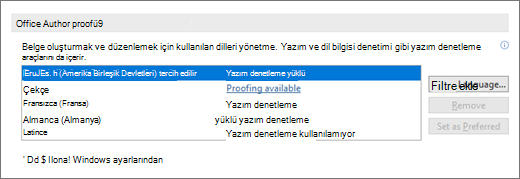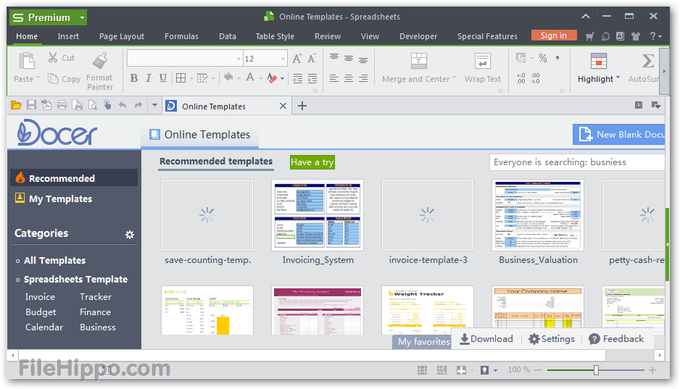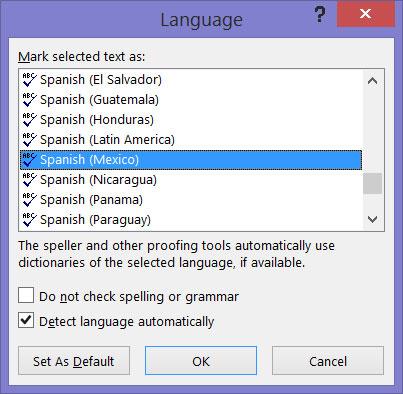
- #Install russian spell check for office for mac 2016 how to
- #Install russian spell check for office for mac 2016 password
- #Install russian spell check for office for mac 2016 plus
Note that the system language is distinct from the keyboard language, which determines what you can type.
#Install russian spell check for office for mac 2016 how to
lproj folder found inside the app.Īpple's information on how to localize applications can be found here. If you want to permanently run an app in a localization different from that of the OS, you will need to rename the. To run an application in a language different than that of the OS, try the app found here. It should then sort with the Latin names. To avoid Unicode order in Contacts.app (where all names in scripts other than that of the OS are put at the end), use Card > Add New Field > Phonetic First/Last Name to create a Latin script name for each contact in another script. Numbers come before Latin characters, Greek comes after. The standard sort order in OS X is based on a Unicode system. Hawaiian sort order is not at all like English, for example.

There can be some unexpected consequences if you put an unusual language in first place. The top language also determines the default sort order for lists, which can be set independently via a separate menu on the same preference tab. To change the default font for a specific language, see this page. Also the order will determine which localization will be used for any app which does not have the files needed for the language at the top of the list. So if Chinese is ahead of Japanese in this list, Chinese fonts should normally get first choice by the system in any ambiguous situation. Safari uses the order of languages in this list to tell sites what language it prefers, and OS X uses it to determine default fonts. The top language determines the localization of the OS (among the 34 available). If you poke the "Plus" button in the Preferred Languages tab to see all varieties available, you get a list of over 130, the exact number depending on whether you have added any additional language fonts.

#Install russian spell check for office for mac 2016 password
Be careful to keep your keyboard the same for all login and logout operations, or you can find your password will not work. "Fast User Switching," activated in the Accounts preferences, enables you to quickly rotate your screen among different system languages if you set up separate users for them.

Note that Asian text features like phonetic guides are only available if you have Word 2016 set to English/English US or an Asian language. But MS Office for Mac 2016 is multilingual like all Apple apps - it will adopt the language the OS user interface is set to. If you want to change to another language, see this page. Note that MS Office 2011 for Mac is monolingual. Sometimes other localizations produced by 3rd parties are made available by the Apple sites in specific countries.
#Install russian spell check for office for mac 2016 plus
To expand the list, click on the plus button and then "add". Just move your preferred language to the top of the list.

These languages, which affect system-wide menus and dialogues, can also be changed, for your next login, via the Preferred Languages menu of the Language & Region pane in System Preferences. Localization MacOS offers the choice of 34 system languages out of the box - English, Japanese, French, German, Spanish, Spanish (Mexico), Italian, Dutch, Swedish, Danish, Norwegian, Finnish, Traditional Chinese, Simplified Chinese, Korean, Brazilian Portuguese, European Portuguese, Russian, Polish, Arabic, Czech, Hungarian, Croatian, Greek, Catalan, Hebrew, Hindi, Romanian, Slovak, Thai, Ukrainian, Turkish, Vietnamese, Malay, and Indonesian. There are no new spellcheckers or language keyboards. High Sierra adds some new language features to what is available in Sierra: One new system localization (Hindi), and 2 new English translation dictionaries (Russian and Portuguese). For info on OS 9, ask for the page on OS X 10.4, which was the last to support running that. Email me if you would like to see a similar text for an earlier version of MacOS/OS X. These comments are based on MacOS 10.13, first issued 9/25/17. The place to ask for new language features and bug fixes is the feedback channel. In addition, readers may find it useful to consult my blog, where I try to post info on current developments in this area.īasic Apple documentation for MacOS can be found in the Help menu of the Finder if you put "languages" in the Question box.Īpple sponsors general user-to-user Support Communities in English, Japanese, Korean, Chinese, Spanish, Portuguese, French, and German. Comments and additions from readers are most welcome. This document explains these capabilities and provides various resources to help users exploit them to the maximum degree possible. One of the best-kept secrets about Apple's devices is the built-in support theycontain for reading and writing languages beyond English, including onesthat use non-Latin scripts and characters. Unleash Your Multilingual MacHow to Read/Write Languages Other Than English on your Mac and Other Apple Devices by Tom Gewecke (tom at bluesky dot org)


 0 kommentar(er)
0 kommentar(er)
